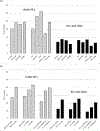Cost-related Medication Nonadherence and Its Risk Factors Among Medicare Beneficiaries
- PMID: 33298705
- PMCID: PMC7735208
- DOI: 10.1097/MLR.0000000000001458
Cost-related Medication Nonadherence and Its Risk Factors Among Medicare Beneficiaries
Abstract
Background: Unaffordability of medications is a barrier to effective treatment. Cost-related nonadherence (CRN) is a crucial, widely used measure of medications access.
Objectives: Our study examines the current national prevalence of and risk factors for CRN (eg, not filling, skipping or reducing doses) and companion measures in the US Medicare population.
Research design: Survey-weighted analyses included logistic regression and trends 2006-2016.
Subjects: Main analyses used the 2016 Medicare Current Beneficiary Survey. Our study sample of 12,625 represented 56 million community-dwelling beneficiaries.
Measures: Additional outcome measures were spending less on other necessities in order to pay for medicines and use of drug cost reduction strategies such as requesting generics.
Results: In 2016, 34.5% of enrollees under 65 years with disability and 14.4% of those 65 years and older did not take their medications as prescribed due to high costs; 19.4% and 4.7%, respectively, experienced going without other essentials to pay for medicines. Near-poor older beneficiaries with incomes $15-25K had 50% higher odds of CRN (vs. >$50K), but beneficiaries with incomes <$15K, more likely to be eligible for the Part D Low-Income Subsidy, did not have significantly higher risk. Three indicators of worse health (general health status, functional limits, and count of conditions) were all independently associated with higher risk of CRN.
Conclusions: Changes in the risk profile for CRN since Part D reflect the effectiveness of targeted policies. The persistent prevalence of CRN and associated risks for sicker people in Medicare demonstrate the consequences of high cost-sharing for prescription fills.
Conflict of interest statement
The authors have no potential conflicts of interest to disclose.
Figures


References
-
- Gellad WF, Grenard J, McGlynn EA. A Review of Barriers to Medication Adherence: A Framework for Driving Policy Options: The RAND Corporation; 2009.
-
- Heisler M, Langa KM, Eby EL, Fendrick AM, Kabeto MU, Piette JD. The health effects of restricting prescription medication use because of cost. Med Care 2004;42:626–34. - PubMed
Publication types
MeSH terms
Grants and funding
LinkOut - more resources
Full Text Sources
Medical
Miscellaneous

